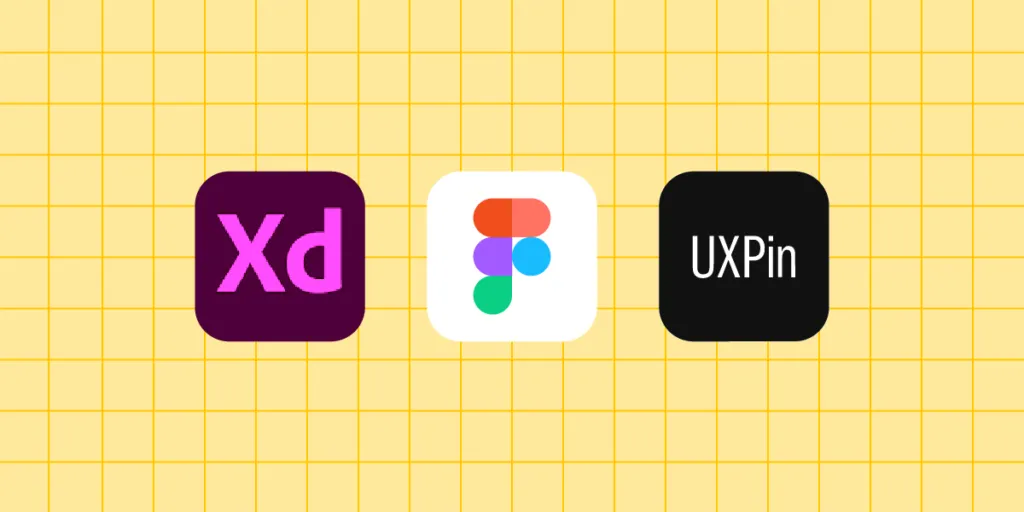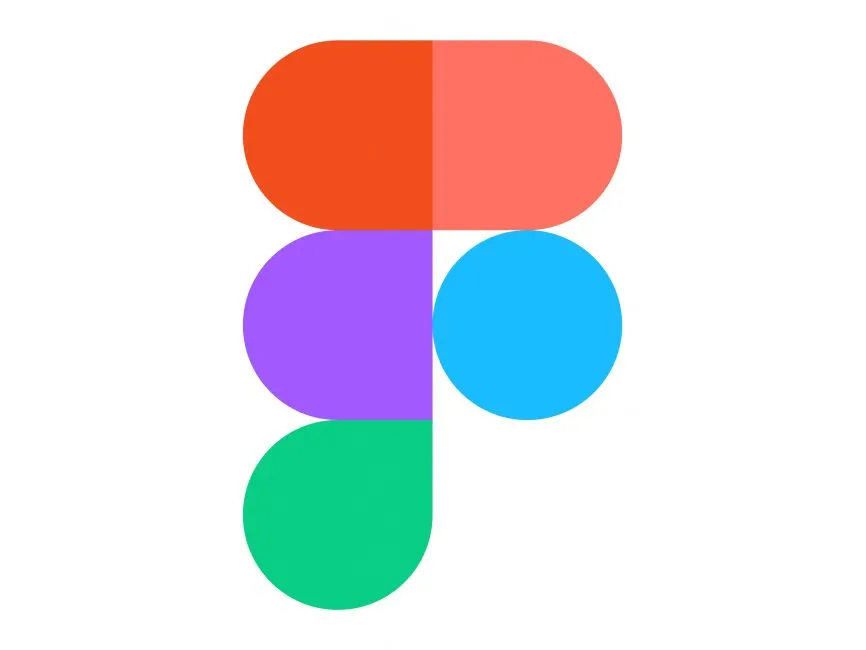What’s the Difference Between Figma vs AdobeXD vs UXPin?

Figma, AdobeXD, and UXPin are three leading user experience design tools for designing digital products. We compared these three platforms and how they stack up regarding UI design, mockups, prototyping, and collaboration. Read on to discover which design tool is best for your project demands and team needs.
Key takeaways:
- By integrating seamlessly with the Creative Cloud suite, AdobeXD facilitates a smooth design workflow with tools like Photoshop and Illustrator.
- Figma is a platform best for real-time collaboration, enabling simultaneous design by multiple users.
- UXPin stands out as a code-based design tool, allowing for complex prototypes and bridging the gap between design and coding with its Merge technology.
- Choosing the right design tool hinges on project complexity, collaboration needs, integration preferences, and prototyping capabilities.
Solve hidden usability issues and identify more business opportunities during the design process with the world’s most advanced user experience design tool. Create a single source of truth across design and development. Discover UXPin Merge.
What is AdobeXD?

- Price: $82.49 for Creative Cloud (includes 20+ creative desktop and mobile apps including Photoshop, Illustrator, InDesign, Premiere Pro, and Acrobat)
- Best for: Adobe users, UI design
- Feature overview:
- Seamless integration with Creative Cloud, including Photoshop and Illustrator.
- Auto-Animate enables smooth micro-interactions and transitions, enriching prototype realism.
- Voice prototype integration helps designers test voice user interfaces.
- Repeat Grid facilitates rapid duplication of design elements, optimizing repetitive tasks and ensuring design consistency.
AdobeXD is a user experience and user interface design tool from Adobe’s extensive Creative Cloud suite. AdobeXD is a platform for designing, prototyping and sharing interactive designs. Its integration within the Adobe ecosystem allows designers to effortlessly transition between tools like Photoshop or Illustrator, streamlining their design process.
What is Figma?

- Price: $12 – $75
- Best for: UI design, collaboration
- Feature overview:
- Real-time collaboration enables multiple users to design simultaneously, fostering teamwork and instant feedback.
- Integration capabilities offer many plugins and third-party apps, enhancing the platform’s functionality.
- Browser and desktop applications.
- Dev mode makes it easy for engineers to analyze designs and convert them to code with starter CSS.
- With Variables, designers can change component properties based on user interactions.
Figma is a vector-based design platform built for real-time collaboration. As a browser-based tool, it eliminates barriers to access, ensuring teams can work synchronously regardless of location or device. Figma’s intuitive interface and powerful prototyping capabilities make it a favored choice for UX professionals.
The tool’s emphasis on collaboration, with features allowing multiple designers to edit a project simultaneously, has redefined teamwork in the design space, cementing Figma’s position among top-tier design tools.
Does Adobe own Figma?
Adobe announced its planned acquisition of Figma in September 2022. However, the deal still hasn’t gone through and must pass regulatory scrutiny, including an August 2023 European Commission investigation. The regulator’s primary concern is Adobe’s acquisition, which “may reduce competition in the global markets for the supply of interactive product design software and for digital asset creation tools.”
If this deal goes through, it’s rumored that Adobe will discontinue AdobeXD and bundle Figma into Creative Cloud as its user experience design tool.
What is UXPin?

- Price: $39-$149
- Best for: UI design, interaction design, design systems
- Feature overview:
- Browser and desktop applications.
- Advanced interactive prototyping allows designers to solve more usability issues and identify better business opportunities during the design process.
- Real-time collaboration and communication using UXPin’s Comments.
- States allow designers to create multiple states for a single UI element and design complex interactive components like dropdown menus, tab menus, navigational drawers, and more.
- Variables capture data from user inputs and create personalized, dynamic user experiences–like their name and profile image in the app bar.
- Expressions Javascript-like functions to create complex components and advanced functionality–no code required!
- Conditional Interactions create if-then and if-else conditions based on user interactions to create dynamic prototypes with multiple outcomes to accurately replicate the final product experience.
- Design with code components (React, Vue, Angular, etc.) using UXPin’s Merge technology.
- Connect APIs and other digital products using UXPin’s IFTTT integration.
- Create and share a component library with UXPin’s Design Systems, including assets, documentation, UI elements, colors, and typography.
- Cross-platform prototype testing with UXPin Mirror for native applications (iOS and Android).
UXPin is a code-based design tool enabling designers to create realistic prototypes effortlessly. The tools Forms and built-in design libraries allow designers to build mockups and prototypes, test, and iterate faster than traditional image-based design tools like Figma and AdobeXD.
UXPin’s USP is its ability to render code rather than vector graphics. This code-based approach increases prototyping scope and enhances testing for better feedback from stakeholders and users.
Take digital product design to the next level with UXPin’s Merge technology. Designers can import UI components from a repository and build fully functioning prototypes that look and feel like the final product.
What is the Difference Between UXPin and Figma?
At first glance, UXPin and Figma appear similar. Designers will find component libraries and layers to the left and properties and interactions to the right with the design canvas center for both tools. This familiarity makes switching tools easy, especially for UX designers who like to design in Figma and prototype in UXPin.
Here are some of the key differences between UXPin and Figma:
- UXPin is code-based, while Figma is image-based. UXPin’s code-based approach means designers can create code-like functionality and interactions that are impossible to replicate in Figma or AdobeXD.
- UXPin has functioning form fields, including text inputs. Conversely, Figma’s input fields are unusable, non-interactive graphical representations.
- Code-to-design vs. design-to-code. Figma is a design-to-code tool, meaning developers must convert static designs into code. While UXPin offers a design-to-code workflow, it also provides a code-to-design solution, allowing designers to import code components into the design process using Merge.
- Figma uses artboards and frames, while UXPin separates screens into Pages.
Which Design Tool is Best for Prototyping?
Image-based design tools like Figma and AdobeXD are great for wireframing, mockups, and basic low-fidelity prototyping but cannot compete with UXPin’s interactive prototyping capabilities.
For example, you can create aesthetically pleasing forms and user flows in Figma and AdobeXD, but the inputs aren’t interactive, so designers can’t get meaningful insights during testing. They must use external tools or work with engineers to build working prototypes.
Conversely, with UXPin’s interactive features, including States, Interactions, Variables, and Expressions, designers can design interactions, user flows, and functionality that mirrors a code-based prototype. These advanced features significantly increase prototyping scope, eliminating the need to include developers–even for complex prototype functionality and API integrations.
How to Choose a Design Tool?
Below are pivotal decision-making criteria to help steer you toward Figma, AdobeXD, or UXPin:
- Project scope and complexity: Any three tools offer comparable experiences and outcomes for straightforward designs. However, if you want to build interactive prototypes or sync design and development, then UXPin is the best option.
- Collaboration needs: Figma’s simultaneous multi-user functionality becomes indispensable if real-time collaboration sits high on your list. UXPin offers a similar solution via its Comments feature, which integrates with Slack.
- Platform accessibility: Figma and UXPin’s browser-based applications are essential for prioritizing access anywhere. Conversely, if you’re an Adobe Suite loyalist, AdobeXD better fits your ecosystem.
- Integration and extensions: Figma’s rich integration ecosystem stands out if your workflow thrives on third-party plugins. However, seamless sync with tools like Photoshop would point you to AdobeXD. UXPin and Merge technology is best if you prioritize syncing design and development.
- Feedback loop: A streamlined feedback process can be pivotal for modern asynchronous product development. UXPin’s Comments on Preview allows stakeholders and other teams–even if they don’t have a UXPin account–to annotate feedback on prototypes, including assigning comments to specific team members.
- Advanced prototyping: UXPin offers the most sophisticated prototyping capabilities, but AdobeXD’s voice prototyping is a unique and helpful feature for VUI designers.
- Single source of truth: UXPin is the only one of these three tools to offer a code-to-design solution via Merge technology. Merge bridges the gap between designers and engineers with a single UI library for design and development, creating a seamless product development workflow and frictionless handoffs.
- Learning curve: While AdobeXD, Figma, and UXPin offer comparable learning curves, UXPin’s advanced features will take slightly more time to master. The payoff? Rapid design iterations and a faster time to market.
“I liked Figma a lot. It’s a huge improvement over my previous go-to design tool, Balsamiq. But now that I’ve learned how to leverage the powerful scripting capabilities of UXPin and design interactive UIs with the same live HTML UI controls that my engineering colleagues will use in the finished product, there’s no way I could go back.” Anthony Hand, Senior UX Designer.
Why UXPin’s Code-to-Design Outshines Figma and AdobeXD
While Figma and AdobeXD deliver on visual design, UXPin’s code-to-design approach sets it apart by bridging the gap between design and development. By rendering actual code instead of vector graphics, UXPin ensures a prototype’s authenticity, sidestepping the common pitfalls of misinterpreted vector-based prototypes and interactivity.
UXPin’s Merge technology integrates UI components from repositories, enabling fully-functional high-fidelity prototypes that accurately reflect the end product. Figma and AdobeXD rely more on visual representations, often requiring additional tools or developers to bring designs to life. This streamlined efficiency positions UXPin at the forefront of a seamless, accurate, and rapid design-to-development process.
Join the code-to-design revolution to create better designs, improve designer/developer collaboration, and deliver better user experiences for your customers with UXPin and Merge technology. Visit our Merge page for more details and how to request access.




